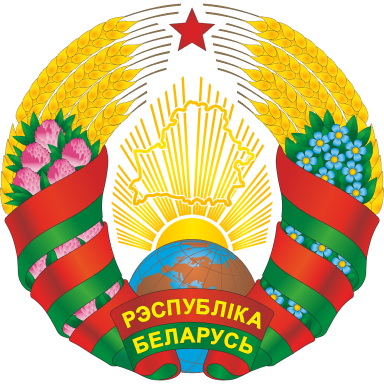Orsha District is located in the southeast of Vitebsk Oblast in the upper stream of the Dnieper River, between the lowlands of the Luchesa River and the Orsha-Mogilev Plateau. Orsha District has two types of terrain: the Orsha Upland in the north and in the west and the Orsha-Mogilev Plain in the southeast. Orsha District borders Senno District and Liozno District in the north, Tolochin District in the west, Dubrovno District (all located in Vitebsk Oblast) and Gorki District in the southeast and Shklov District in the south (Mogilev Oblast).
Orsha District covers an area of 1,700km2. Agricultural lands occupy 102,600 hectares, of them 73,880 hectares are arable lands. Orsha District is home to 260 settlements, including 2 towns.
The highest point of Orsha District is located 237.5m above sea level, the lowest is 146m. The Orsha Upland is part of the moraine ridge, the legacy of the glacier that left behind boulders of different size scattered in fields of Orsha District. The largest of them are considered natural monuments such as the one near the village of Kudayevo. Orsha District is mainly floodplain meadows, dry meadows and shrubs. The climate is moderately continental, with the average annual temperature hovering at -7.8C in January, and +18 C in July. The average annual rainfall is about 627mm. The vegetation period is 184 days.
Seventy rivers and streams flow across Orsha District, their total length being 544.2 kilometers. The Baltic Sea system incorporates rivers and streams of the Western Dvina river basin. These include the Glukhaya, Zeremnyanka, Dobrinka, Berezovka, Verkhita rivers. Most of the rivers flowing across Orsha District are part of the Dnieper River basin. The largest of them are the Leshcha, Dernovka, Orshitsa, Adrov, Krapivenka. The water protection zones of small rivers occupy 37,532.7 hectares or 22% of the total area of Orsha District.
Orsha District is home to 14 water bodies, including nine lakes, two reservoirs and three ponds. The largest lakes are Bolshoye Orekhovskoye, Devinskoye, Kuzmino, Karesino, Perevalochnoye. The area of water protection zones of water bodies in Orsha District is equal to 4,294.4 hectares, which accounts for 2.6% of the total area of Orsha District. Swamps occupy an area of 4,200 hectares.
Forests cover 23% of Orsha District. Mainly these are coniferous and spruce forests. Orsha District is also home to birch, aspen, and alder forests.
The flora and fauna of Orsha District are diverse featuring elk, wild boar, roe deer and red deer. Much less common are eagle owl, red-footed falcon, badger, and cooper, which are listed in the Red Book of Endangered Species of the Republic of Belarus. The Klukov forestry is a habitat for pulsatilla pratensis listed in the Red Book of Endangered Species of the Republic of Belarus.
In Orsha District there are 13 natural monuments of national importance, eight natural monuments of local significance (Dendrological Garden featuring 250 species of exotic plants in the Kopys forestry affiliated with Orsha Experimental Forestry Enterprise) and one nature reserve of local significance, namely the Altevskaya Ridge, 90.5 hectares large, located in the Mezhevo Village Council. Peat, dolomite, sand and gravel, building sand, fusible clay are the main minerals of Orsha District.
The city of Orsha is located in the southeast of Vitebsk Oblast, in the upper stream of the Dnieper River and its tributary Orshitsa, partly on the slopes of the Orsha Upland at the average height of 180m above sea level. The city is located on both banks of the Dnieper, crossed by the Orshitsa River, with the Adrov River flowing on the southern outskirts. The total length of the rivers within the city exceeds six kilometers. There are many parks in the city of Orsha: Central City Park, Pridneprovsky, Tekstilshchikov, Heroes Park, Pioneers Park and others. The city covers an area of 33 square kilometers.























